You are reading the older HTML site
Positive Feedback ISSUE
13may/june 2004
opera audio
Consonance Reference 2.0 SACD player
as reviewed by Gary L. Beard and Vade Forrester
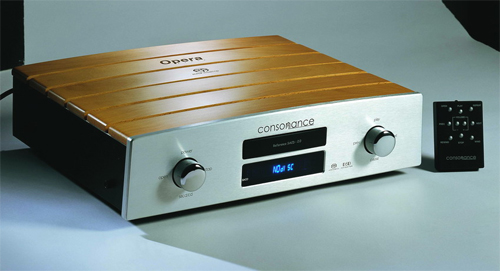
LOUDSPEAKERS ELECTRONICS SOURCES CABLES ACCESSORIES
|
 Ah,
first impressions. With nearly every component I have listened to in my
home, I have been able to form an early opinion—not necessarily one that
stuck, but one that allowed me to begin the process of evaluation. Not
so with the Opera Audio Consonance Reference 2.0 SACD player. After
receiving it, I hooked it up and let it warm itself, then ran it through
its paces. No problems, but when I sat down to listen for the first time
the next evening the sound was so perplexing that I couldn't make
heads or tails of what I was hearing. I sent a rather cryptic email to
Dave Clark to inform him of my confused state. He was confused at my
confusion. So it began. I gave the player a few more days to make itself
at home in my system, and when it finally did, the listening pleasure I
derived from it was high.
Ah,
first impressions. With nearly every component I have listened to in my
home, I have been able to form an early opinion—not necessarily one that
stuck, but one that allowed me to begin the process of evaluation. Not
so with the Opera Audio Consonance Reference 2.0 SACD player. After
receiving it, I hooked it up and let it warm itself, then ran it through
its paces. No problems, but when I sat down to listen for the first time
the next evening the sound was so perplexing that I couldn't make
heads or tails of what I was hearing. I sent a rather cryptic email to
Dave Clark to inform him of my confused state. He was confused at my
confusion. So it began. I gave the player a few more days to make itself
at home in my system, and when it finally did, the listening pleasure I
derived from it was high.
With its brushed aluminum faceplate and cherry wood top, the Consonance Reference is visually appealing. The rest of the chassis is black-painted sheet steel. The player sits on four cushioned feet, which give it a solid, "stay-put" feel. The rear panel has a pair of RCA analog outputs, a pair of XLR analog outputs, and two digital outputs, one coax and one toslink. The front panel's blue display indicates the current track number and playing time, if there is a disc present, and whether that disc is a CD or an SACD (or, in some cases, an UNdisk). It also indicates whether the unit is set on repeat mode, and shows the volume level when the remote control is used. Directly above the display is the disc tray, which is of the flimsy plastic sort that is found on many players.
There are only two control knobs, one on each side of the display, and each controls multiple functions via a four-way joystick. You push up for one function, down for another, and left and right for the other two. The operations controlled by the first knob are Power, Open/Close, Stop, CD or SACD (for hybrid discs). Play, Pause, Previous, and Next are controlled by the other. The knobs worked fairly well after I got the hang of them, but I am willing to bet that many users will hate them. The small metal remote is very nice, with jangly ball bearing pushbuttons. All the functions on the front of the player are duplicated on the remote except Power, plus a digital volume control that offers thirty steps with single pushes of the button and continuous operation if you hold the button down. There are also buttons for forward and reverse searching, curiously named Wind and Rewind. The remote has a wide range, and works whether or not you are aiming it at the player. It works well, though not in the dark, as all the buttons are the same size and are not backlit, but I learned the button placement after awhile.
The player uses a Burr Brown DSD1702 chip for D/A conversion, and the RCA analog outputs are buffered by a single 6H30 tube. The other outputs are strictly solid state. All of my listening was done through the RCA outputs, so I have no opinion about the sound of the XLR or digital outputs. I only encountered one significant problem with the player. I had two CDs of recent vintage that the Consonance would not recognize, and it only read about 25% of my CD-Rs. A few that did play would occasionally skip as well. Toward the end of my time with the Ref 2.0, I determined that CD-Rs burned on my new computer played without problems.
The Consonance Reference 2.0 SACD is an SACD player first and foremost. I owned Sony's beastly SCD-777ES for a couple of years, so SACD playback is not new to me, but because the software had not matured at the time I owned the 777, I have very few SACDs. I was more interested to hear Redbook CD playback on a player of new design, as I sold my Sony only because I felt its CD performance could be improved. Any player I buy from now on, no matter the format, has to be able to do an excellent job with CDs.
Although I wasn't sure if I liked this player at first, I have felt that way with almost every CD player I have tried. Digital has an acclimation process that may be subtle for some people, but for me it is more intense than that of any other component. It turned out that I really liked this player. It has a big, 3-D sound that is captivating, yet it does not smooth over the music. The Ref 2.0 has a wide, high soundstage. The images are palpable and dense, with a depth that seems more real than artificial. The fact that the noise floor is low and the treble smooth allowed me to turn up the volume to a higher level than I have been able to do with many other players. This was both a blessing and a curse. I loved the additional kick available from serious voltage, yet I shouldn't have been listening at such loud levels. The digital volume control really came in handy. One or two steps made an appreciable difference when I was trying to find that magic volume level at which things just sound right. The digital attenuation worked quite well, and although I didn't like the sound when using it as much as I did when the player was driving my amplifier directly, it is a very nice feature.
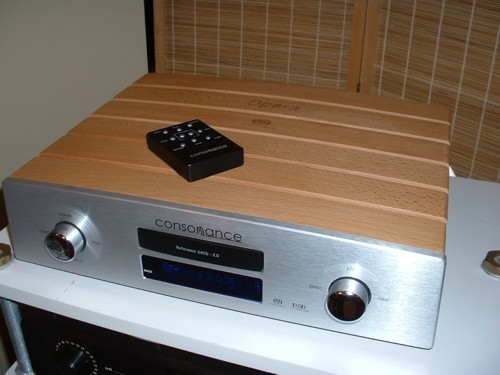
According to Stephen Monte of NAT Distribution, Consonance's U.S. importer, the Reference 2.0 upsamples Redbook CDs to 24bit/192k. No matter how it is accomplished, the sound of a well-recorded CD played through the Ref. 2.0 is on par with that of all but the very best SACDs I own. The player gives music a warm glow, one that did not seem indicative of heavy coloration, since it was neutral enough to pull out the character of each recording. I found the Ref 2.0 to be an amalgam of all the good things associated with vacuum tubes, although I can't say whether the single tube it employs is the reason for its captivating sound.
Immediately after firing up a well recorded CD like Meshell Ndegeocello's Peace Beyond Passion, I found my senses bombarded with big, bold, dynamic sound, a huge soundstage that was well beyond the boundaries of my speakers, and an excellent, deep soundscape that extended far into the room as well as behind the speakers. The dense, 3D images were of the reach-out-and-touch variety, and provided an effect of considerable realism. Frequency extremes were good to excellent, although the treble seemed a touch rolled off at the very top and the lowest bass, while tuneful and deep, got a little out of control on some recordings. Neither was a serious problem. I never really thought the treble needed any help, and the bass was visceral and compact enough to show off Ndegeocello's fabulous bass playing. The midrange was terrific—present, warm, airy, fleshed out, and a perfect complement to the naturalness of the rest of my system.
For a different take, I connected the Ref 2.0 directly to my Berning ZH270 amp. While the sonic flavor was the same, there were startling changes. The soundstage became huge, with more width and height than I had ever heard in my system. Images were bigger and bolder, yet slightly more diffuse without the location specificity of the First Sound preamp. In fact, while the overall stage traveled well outside the bounds of the speakers, some location cues—like Vanessa Carlton's voice on The Counting Crows' remake of "Big Yellow Taxi"—were now slightly inside the speaker instead of just outside. This was not an isolated instance, as nearly every CD or SACD I played was slightly different in image presentation. There was a slight grain to the very highest treble, and the player seemed to need the control of the preamp to keep its musical powers under control.
I noted a few interesting things about the Consonance. Its emphasis on the music was clearly different than that of my current reference player, the Cary 303/200. The Cary is more laid back, yet I found it to be more neutral and slightly more resolving. The Cary doesn't editorialize—it just plays music. The Consonance, on the other hand, is a more exciting player that puts you in the middle of the action. It may be slightly darker in tone than my reference, but its harmonic richness sounded wonderful in my system. It is quite capable in the realms of rhythm, pace, and musical drive. Within the expansive and seamless stage, I would occasionally hear very specific musical passages, mostly individual voices or instruments, radiating directly from a speaker. I know this is anything but unusual, but these passages spoke to me with a high degree of insistence. Was this due to a somewhat forward presentation? I would say so, but not so much that the music was "in your face."
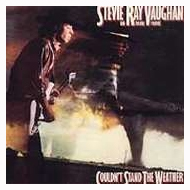 The
Ref. 2.0 is quite adept at reproducing spatial cues and ambience, which
furthers its ability to give a realistic portrayal of recordings that
contain such information. This was particularly easy to discern when
playing SACDs. On my favorite, Stevie Ray Vaughan's Couldn't Stand
The Weather, it really felt like I was in the studio with Stevie as
he talked about his guitar playing. Cuts like "Voodoo Chile (Slight
Return)" and "Couldn't Stand The Weather" were simply stunning, and
showed all of the potential of the SACD format. On the wonderful
Vanguard Classics hybrid featuring Louis Moreau Gottschalk's A Night
In The Tropics and Morton Gould's Latin American Symphonette,
the player showed its prowess with big orchestral pieces. Big and bold,
yet with a delicate touch reserved for the quiet passages, the
Consonance passed this test with flying colors. The SACD layer seemed to
impart just a smidge more life and musicality than the CD layer, but I
felt they were very close. Two SACDs that did not sound all that great
on the Sony SCD-777ES sounded much more alive and listenable on the
Consonance. Roger Water's In The Flesh live album had tons of
live hall ambience and sounded great. Train's Drops Of Jupiter,
which never did much for me, largely because of a poor recording,
sounded much better. Considering my limited collection of SACDs, I am
not going to stretch too far here, but I will give the player a thumb's
up for its SACD playback.
The
Ref. 2.0 is quite adept at reproducing spatial cues and ambience, which
furthers its ability to give a realistic portrayal of recordings that
contain such information. This was particularly easy to discern when
playing SACDs. On my favorite, Stevie Ray Vaughan's Couldn't Stand
The Weather, it really felt like I was in the studio with Stevie as
he talked about his guitar playing. Cuts like "Voodoo Chile (Slight
Return)" and "Couldn't Stand The Weather" were simply stunning, and
showed all of the potential of the SACD format. On the wonderful
Vanguard Classics hybrid featuring Louis Moreau Gottschalk's A Night
In The Tropics and Morton Gould's Latin American Symphonette,
the player showed its prowess with big orchestral pieces. Big and bold,
yet with a delicate touch reserved for the quiet passages, the
Consonance passed this test with flying colors. The SACD layer seemed to
impart just a smidge more life and musicality than the CD layer, but I
felt they were very close. Two SACDs that did not sound all that great
on the Sony SCD-777ES sounded much more alive and listenable on the
Consonance. Roger Water's In The Flesh live album had tons of
live hall ambience and sounded great. Train's Drops Of Jupiter,
which never did much for me, largely because of a poor recording,
sounded much better. Considering my limited collection of SACDs, I am
not going to stretch too far here, but I will give the player a thumb's
up for its SACD playback.
The Consonance player is very dynamic, due in large part, I believe, to its low noise floor. It has excellent clarity at high volumes, and it was great to turn up some of my fave rock ‘n' roll without high-frequency uneasiness. After much mental wrestling, I have come to the conclusion that this player does not have quite as much inner resolution on Redbook CD as my Cary. This gives it an advantage in smoothness, while still sounding detailed and energetic. Even though the Ref 2.0 may be less resolving than my reference, I could never discern any quantifiable difference, so this is merely a subjective conclusion (as are my others).
I knew a few things for certain the first time I looked at the Consonance player. One is that it is a very attractive piece of gear, another was that I was excited to play my SACDs again, and the third was that it had to be able to play CDs better than I expected if it were to find favor in my listening room. With the end of my review time in sight, I revised those first thoughts just a little—the 2.0 is not only attractive, it is beautiful, my SACDs still sound great, and this player can play the heck out of a CD.
I should caution readers that, despite my enthusiasm, they should audition this player just as they would any other. This player has its own voice, one that may or may not be what you'd like to have in your system. Once in a great while, the synergy created by a single component transcends all the audiophile hyperbole and just sounds really good. I found the Consonance Reference 2.0 to be that kind of component. Comparisons have proved difficult or meaningless, and whether the Ref 2.0 is "better" is of no importance to me. If you are in the market for a one-box solution to the CD/SACD dilemma, you owe it to yourself to listen to the Reference 2.0, because it makes beautiful music. Gary L. Beard

VADE FORRESTER'S SYSTEM LOUDSPEAKERS ELECTRONICS SOURCES CABLES ACCESSORIES
|
 The
Opera Audio Consonance 2.0 was my first
experience with an SACD player in my system, so I can't judge whether
it's better or worse than other SACD players. However, like most people,
I own a lot more CDs than SACDs, and spent lots of time listening to the
2.0 playing regular CDs.
The
Opera Audio Consonance 2.0 was my first
experience with an SACD player in my system, so I can't judge whether
it's better or worse than other SACD players. However, like most people,
I own a lot more CDs than SACDs, and spent lots of time listening to the
2.0 playing regular CDs.
The very solid (35-pound), Chinese-built 2.0 has the unique, yet somehow nostalgic styling of other Consonance equipment. The wooden top of the metal cabinet is not made of a single piece of cherry, but parallel planks that not only look handsome but provide resonance control. Spaces between the planks give access to the metal cabinet underneath, which allows for cooling. I couldn't help remembering the massive wooden enclosures within which we used to shroud our stereo equipment in an attempt to make it more presentable. All the big-name companies—Scott, Fisher, McIntosh, even Dynaco—offered wood or wood-grain cabinets for their equipment. The 2.0's top arches upward towards the center, making it difficult to stack another component on top of it. Stacking components is a bad idea anyway, as it usually scratches the lower unit and transmits vibration between the components. The 2.0's soft rubber feet should be effective at absorbing vibration, as well as preventing scuffs to the shelf on which the player sits.
A single tube in the output stage distinguishes the 2.0 from many other SACD players. It's not an ordinary tube, but the formidable Sovtek 6H30, the same tube Audio Research uses in its top-of-the-line Reference 2 Mk II preamplifier and Balanced Audio Technology uses in its top-of-the-line VK-51SE. Unfortunately this limits opportunities for tube rolling, but perhaps that's just as well, since the otherwise helpful instruction manual omits any instructions for replacing the tube when it fails. (Come to think of it, there are no instructions for replacing the batteries in the remote either. I'm guessing you have to unscrew the four Philips screws holding the bottom cover on the remote to replace the batteries.)
The Consonance's front panel controls are unusual, consisting only of two knobs flanking the disc drawer and display panel. Actually, since they don't turn, it would be more accurate to call them joysticks than knobs, as they move only horizontally and vertically. The left control turns the unit on and off, opens the drawer, switches between SACD and CD, and stops the unit. The right control has the traditional play, pause, back-one-track, and forward-one-track functions. I never really grew to like these controls, though I suppose I could get used to them. They did feel heavy duty, however.
The hefty metal remote worked well, even far off-axis. The deck-of-cards-sized unit provides pushbutton controls for all the front panel controls (except power), and adds several useful functions, including wind and rewind controls, which supposedly operate like those on a tape deck, moving the playback point forward or back on the disc. This feature would be very useful, but I had difficulty using it. Also accessible only through the remote are the repeat functions, which let you repeat a single track, the entire disc, or cancel the repeat settings. The repeat features were very handy for burning in the player. The remote also has a volume control, which (lacking any information in the manual) I assume is digital. It worked just fine, but not wanting to throw away bits, I set the volume to the maximum on the remote and used the preamp volume control. There were no buttons for directly accessing tracks by numbers, a feature I miss—a lot.
A quick glance at the 2.0's back panel reveals that this is designed as a two-channel player only. Since I'm a two-channel guy, not having to find a way to evaluate the player in multi-channel mode was a relief! You have a choice of balanced or unbalanced output jacks, so the 2.0 will work with almost any system. The RCA jacks were very solid, gold-plated items, which should permit WBT-style locking interconnects to be tightened down without fear of damage. There is also an IEC connector, which makes it easy to experiment with power cords. Coaxial and Toslink connectors provide connection possibilities for an external DAC. Not having a DAC, I didn't try this option, but you probably want to know how the 2.0's internal DAC sounds, not an external one.
I installed the 2.0 in my antique equipment cabinet, next to my venerable Meridian 508.24 CD player (a former Stereophile Digital Component of the Year!), and connected it to my Audio Note M2 Signature preamp via an interconnect made from DNM wire terminated with Eichmann bullet plugs. So far, this flimsy-looking $125 interconnect cable has beaten all comers, including a $1600 big-name interconnect that had been cryogenically treated. Although the 2.0 had been broken in by previous reviewers, I let it play continuously for a couple of days before doing any critical listening. I've found that many components, even well-used ones, need some playing time after being shipped in order to sound their best. Of course, I couldn't help sneaking in a few casual listening moments. After all, I had to be sure the unit was working, didn't I?
I used hybrid SACDs almost exclusively. My methodology consisted of first playing a tune on my Meridian, then playing the same tune on the 2.0 in CD mode. Switching to CD mode took a little time, since the 2.0 first scans the disc to see if there's an SACD layer. CD playback requires a downward nudge on the left control. The unit then scans the CD layer, and you're finally ready to play. Given the problems the 2.0 showed playing the CD layer of a couple of hybrid SACDs, I fed the player several standard CDs, and even challenged it with a CD-R compilation of tracks I use at hi-fi shows. The latter is recorded on a black CD-R disc, but the 2.0 played it and the standard CDs easily.
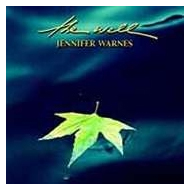 First up was one of my
favorite discs, Jennifer Warnes' The Well (Cisco Music SCD 2034).
On the Meridian, the disc exhibited its familiar open, smooth sound,
with Ms. Warnes' vocals and overdubs coming through with pristine
clarity. I settled on the third track, "Prairie Melancholy," primarily
because I enjoy listening to it. On the 2.0 in CD mode, the sound was
very suave and open sounding. Switching to SACD playback revealed more
detail and spaciousness and better bass definition, although this
recording does not have strong bass. The soundstaging was somewhat
better than in CD mode, with the performers' positions well defined in
space. Then, just because I could, I cued up the LP of The Well.
Wow! It was even smoother, with less grain, than any of the digital
performances, and had stronger mid-bass. Even though the somewhat
bright-sounding EI Gold Elite 12AX7 tubes I was using in the phono
section of my preamp made the surfaces sound a little gritty, the noise
did not intrude during the music. The sense of spaciousness with the LP
was much greater than on any of the digital versions. I'm not an LP
bigot, but in this case, the LP had some sonic advantages.
First up was one of my
favorite discs, Jennifer Warnes' The Well (Cisco Music SCD 2034).
On the Meridian, the disc exhibited its familiar open, smooth sound,
with Ms. Warnes' vocals and overdubs coming through with pristine
clarity. I settled on the third track, "Prairie Melancholy," primarily
because I enjoy listening to it. On the 2.0 in CD mode, the sound was
very suave and open sounding. Switching to SACD playback revealed more
detail and spaciousness and better bass definition, although this
recording does not have strong bass. The soundstaging was somewhat
better than in CD mode, with the performers' positions well defined in
space. Then, just because I could, I cued up the LP of The Well.
Wow! It was even smoother, with less grain, than any of the digital
performances, and had stronger mid-bass. Even though the somewhat
bright-sounding EI Gold Elite 12AX7 tubes I was using in the phono
section of my preamp made the surfaces sound a little gritty, the noise
did not intrude during the music. The sense of spaciousness with the LP
was much greater than on any of the digital versions. I'm not an LP
bigot, but in this case, the LP had some sonic advantages.
Next up was a new SACD, the Bartok Concerto for Orchestra (Hungaraton Classic HSACD 32187). On the Meridian player, I thought the sound was spectacular—very dynamic, with great instrumental placement and realistic sounding instruments. Although the recording spotlights the solos of the Hungarian National Philharmonic Orchestra's first-desk players, which creates a "hole-in-the-middle" effect, it was hard to get too concerned when they sounded so good! The CD layer sounded equally good on the Consonance player. Though it was slightly less dynamic, it was smooth and harmonically realistic.
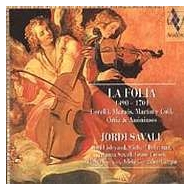 The SACD version of one
of my favorite test tracks by Rodrigo Martinez, from La Folia (AliaVox
AVSA 9805), with Jordi Savall leading an original-instrument early music
group. In issue 8, Bob Neill found that the SACD version of this
recording (made from PCM recordings, not DSD-encoded masters), sounded
more spacious, yet failed to provide other improvements over the CD. I
was eager to see if my experience matched his, since I value the sense
of musicians performing in real space. I also wanted to see if the SACD
would help decipher the extremely dense flow of musical detail on this
recording. The result was a little surprising. The SACD had somewhat
better detail, the spaciousness Bob cited, and slightly better bass
definition, but seemed to lack some of the liveliness and forward
momentum that I have enjoyed so much on other players, including my
Meridian.
The SACD version of one
of my favorite test tracks by Rodrigo Martinez, from La Folia (AliaVox
AVSA 9805), with Jordi Savall leading an original-instrument early music
group. In issue 8, Bob Neill found that the SACD version of this
recording (made from PCM recordings, not DSD-encoded masters), sounded
more spacious, yet failed to provide other improvements over the CD. I
was eager to see if my experience matched his, since I value the sense
of musicians performing in real space. I also wanted to see if the SACD
would help decipher the extremely dense flow of musical detail on this
recording. The result was a little surprising. The SACD had somewhat
better detail, the spaciousness Bob cited, and slightly better bass
definition, but seemed to lack some of the liveliness and forward
momentum that I have enjoyed so much on other players, including my
Meridian.
The CD layer seemed especially laid back on the 2.0, and I became bored listening to it, something that has never happened with this selection. On both SACD and CD layers, there was a slight limiting of dynamics, along with some dulling of the leading edges of transients. These effects were very slight, but perceptible. The 2.0 handled the decay of notes very realistically, which probably contributed to the spaciousness.
My friend Carl, an experienced listener and a member of the Boston Audio Society, observed that the 2.0 lacked a "bouncy" quality, though he commented very favorably on its imaging precision, which localized the source of sounds very well. To get a different perspective, I toted the 2.0 to the sound room of Roger Tiller's Blue Marble Audio establishment, where we tried it in a system that included the very dynamic Naim NAIT 5i amp driving Meadowlark Nighthawk speakers. Naturally, we used his Blue Lightning power cord, along with some prototype interconnects. Roger felt that the 2.0 was very detailed and smooth, but lacked a little punch. It is interesting how different listeners, with different sonic priorities, can reach similar conclusions.
Hoping to improve the dynamics, I replace the 2.0's stock power cord with the Blue Marble Audio cord There was indeed an improvement, especially in the bass, but not to the extent I had hoped. Leading edge transients were still a little dull. I also tried some different interconnects, and found that some very inexpensive Linn interconnects were a good match for the player. They are somewhat midrange-y, and seemed to produce a little more detail in SACD playback, although the bass was weaker and had less definition. Overall, I preferred the better-balanced DNM interconnects.
In summary, the Consonance 2.0 is a fine player for both SACDs and CDs. It never failed to produce a smooth, beautiful sound, with low distortion and great purity. On the other hand, it was a little laid back, and sometimes made me wish for more vitality and "oomph," especially in CD playback. Its build quality appeared excellent, and I thought the wood trim/resonance control strips contributed to its gorgeous appearance. Though the sonic issues that concerned me were very minor, I feel obligated to share them. Even so, I thoroughly enjoyed the 2.0 during the time it spent in my system. Vade Forrester
Consonance Reference 2.0 SACD player
Retail: $2500
NAT
web address:
http://www.natdistribution.com
Opera Audio
web address:
http://www.operaudio.com
